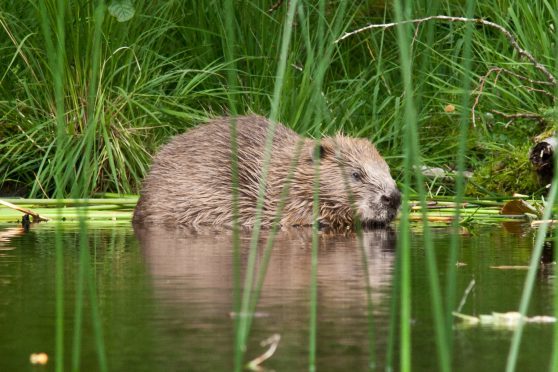A forest in Argyll is going to be busy with beavers after it was announced that a further 28 are to be released.
The Scottish Wildlife Trust and the Royal Zoological Society of Scotland (RZSS), the lead partners of the successful Scottish Beaver Trial, have been granted a species licence to reinforce the population of Eurasian beavers in Knapdale Forest, Mid Argyll.
Up to 28 of the creatures will be released into lochans on land managed by Forest Enterprise Scotland over the next three years. The idea behind the project is to give the small Knapdale beaver population the best possible chance of thriving in the long-term and to increase the genetic diversity of the population.
The beavers will be sourced from a variety of locations. All beavers will be screened to ensure that they are healthy and free from disease before their release into the wild.
The reinforcement will be carried out by Scottish Beavers, a new partnership between the Scottish Wildlife Trust and RZSS created to continue the work of the Scottish Beaver Trial, under licence from Scottish Natural Heritage (SNH)
Sarah Robinson, head of conservation programmes and science for RZSS, said: “We are delighted that Scottish Natural Heritage have granted us a licence to continue the important work that we started with the Scottish Beaver Trial.
“A deliberately small number of Norwegian beavers were introduced to Knapdale in 2009 to ensure we were able to monitor their progress at close quarters. These beavers were limited in both genetic range and overall number, and without urgent action the population is at risk of further decline.
“Now that it has been decided that they can stay, we have a duty to reinforce the population and ensure that they have a chance to make their homes in the wider area. By introducing beavers from a range of sources, we aim to increase their genetic diversity and give them the best possible chance of thriving in the long-term.”
Susan Davies, director of conservation at the Scottish Wildlife Trust, said: “Reinforcing the population at Knapdale is an exciting step forward for the future of beavers in Scotland. We’re thankful to Forest Enterprise Scotland for hosting the Scottish Beaver Trial, and for their continued assistance with monitoring the population in Mid Argyll.”
She added: “Beavers are natural engineers with a unique ability to create new wetland habitats.”










